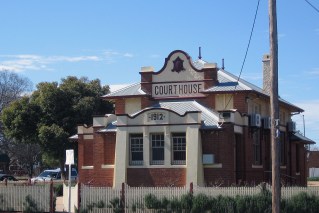Retirees rejoice: Government concedes deeming rates ‘too high’ after rate cut


Some retirees will be rejoicing after Treasurer Josh Frydenberg conceded the deeming rate is too high. Photo: Getty
More than half a million retirees could benefit from a review of how their aged pension is calculated after being hit by a further reduction in interest rates this week.
Treasurer Josh Frydenberg confirmed on Saturday the federal government has accepted the argument that the deeming rate, which is used to work out a pensioner’s financial assets, is too high.
Deeming rates are used by government as a guide to assess how much income pension recipients are likely to receive from investments each year, rather than using each pensioner’s actual investment returns.
The pensioner deeming rate was last set in March 2015 when then-Treasurer Scott Morrison cut the rate back on amounts under $51,800 to 1.75 per cent (for singles) and for larger amounts to 3.25 per cent.
Since then, the Reserve Bank has cut the official cash rate five times, hitting a new record low of just one per cent after this week’s central bank board meeting.
Labor had said the deeming rate was “completely unfair” to pensioners and questioned why it had taken four years for it to change.
Advocates have been calling for deeming rates to be cut in line with record low interest rates announced by the Reserve Bank, with the Combined Pensioners and Superannuants Association (CPSA) arguing retirees receiving an age pension stood to lose up to $215 a year.
On Thursday, chief advocate of lobby group National Seniors Ian Henschke told The New Daily the Morrison government was taking advantage of interest rates of 1 per cent to unfairly tax part-pensioners.
“During the election [Treasurer] Josh Frydenberg was talking about how Labor was planning a ‘retirement tax’,” Mr Henschke said.
“However they have had a ‘pensioner tax’ in place for almost five years.”
if reports government will do something on deeming rates are true: good. but they also need to be upfront about just how much refusing to adjust them for 4 years has cost pensioners.
— Linda Burney MP (@LindaBurneyMP) July 6, 2019
Mr Frydenberg told the Australian Financial Review on Saturday: “Since the deeming rates were last changed … interest rates have come down by more than a per cent and this is now a good time to look at the issue.”
He said, however, that any cut to the deeming rate would not directly follow the falling cash rate because retirees not only invested their savings in term deposits, but also managed funds, shares and superannuation accounts that had far higher rates of return than bank accounts.
“It’s not a straight line equation, you know, that the interest rate comes down, which affects the bank deposit rate, which therefore should affect the deeming rate, it’s not linear,” Mr Frydenberg said.
The five-year average rate of return on ASX 200 shares had been more than 12 per cent and about 6.9 per cent for superannuation income, whereas a $5000 term deposit over six months was paying between 1.75 per cent and 2.45 per cent.
At the moment, for singles, the first $51,800 of financial assets is subject to a deeming rate of 1.75 per cent and anything over $51,800 is deemed to earn 3.25 per cent.
For a couple of which at least one receives a pension, the first $86,200 of combined financial assets has a deeming rate of 1.75 per cent and anything over $86,200 is deemed to earn 3.25 per cent.
While Mr Frydenberg declined to nominate the size of any potential reduction in deeming rates, he said a change would hit the budget bottom line, although not to the extent to jeopardise a return to surplus this financial year.
In 2015 deeming rates were reduced by 0.25 percentage points, which cost the budget $200 million a year and gave part-pensioners an extra $83 a year.
-AAP









